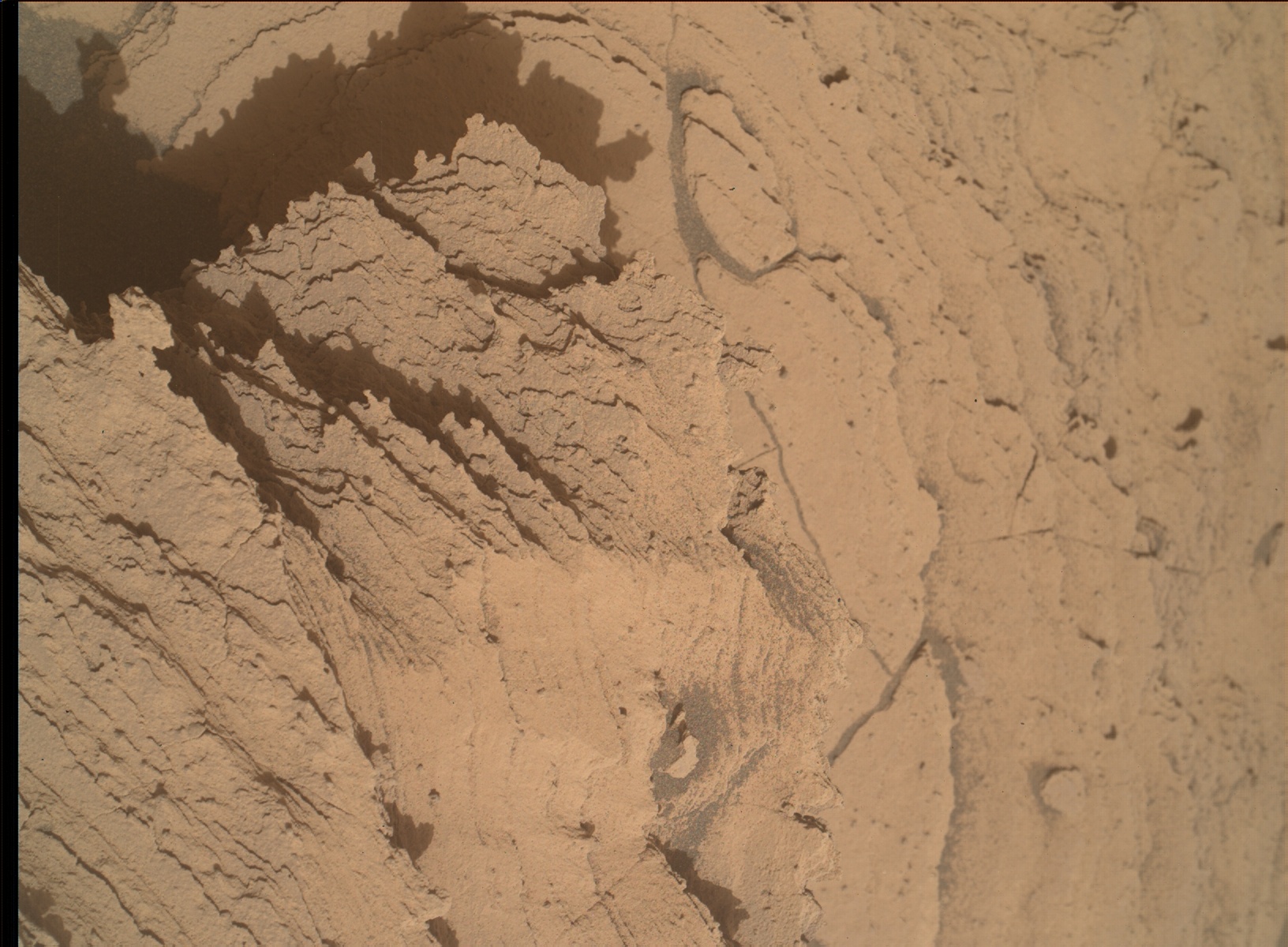3 min read

Earth planning date: Monday, December 4, 2023
It is not unusual for things to not quite go according to plan when commanding a robotic rover more than 370,000,000 km (233,000,000 miles) away on Mars. Today was one of those days. Our planned weekend activities, including finishing up analyses of the Sequoia drill hole and fines, did not make it onboard Curiosity. However, the team is used to responding to such situations, and the first order of business was to decide whether we should stay or go. One of the activities that should have occurred over the weekend was an additional APXS and MAHLI analysis of the powdered material surrounding the Sequoia drill hole. The APXS chemistry of the fines is used to refine and aid with interpretation of the CheMin mineralogy and SAM analyses of the drill fines delivered to those internal laboratory instruments. The team needed to decide whether to stay and recover this measurement, or if we were comfortable with the data that came down over the weekend from an APXS analysis of the Sequoia drill fines last week, and to drive away. As a member of the APXS team, I helped to assess that downlinked APXS data, and convey to the science team that the received data was sufficient and of high enough quality to not warrant staying here for another planning cycle.
Although the decision was made to drive away, the plan was jam packed with activities recovered from the weekend plan, even squeezing in an additional short APXS analysis of the Sequoia drill tailings. These included Mastcam images to look for wind movement of the drilled sample and soil/sand, and to extend the colour imaging of the terrain surrounding the Sequoia drill hole. We are also recovering close-up MAHLI imaging of the Sequoia drill hole and surrounding, powdered fines. ChemCam will utilize their long-distance remote imaging capabilities to continue investigating the layering and structure within the nearby Kukenan butte, and to aid in determining how the stratigraphy fits with the rocks we are driving over.
After our first drive in 54 sols (because of the drill campaign and conjunction) a number of additional activities are planned. The terrain immediately beneath the rover will be documented with a MARDI image, and the new workspace imaged with Mastcam as well as our engineering cameras. ChemCam will fire its laser at an area of bedrock selected using its onboard, autonomous software (AEGIS), giving us a head-start at investigating the chemistry of the new workspace. The environmental team will also recover some of their desired weekend observations in this plan. Paired ChemCam passive and APXS atmospheric activities are planned to monitor seasonal changes in Mars atmosphere, as well as Mastcam tau and Navcam Sky Flats observations. Standard REMS, DAN and RAD activities round out this plan. The team is excited to hopefully find Curiosity parked at a new location when we resume planning.
Written by Lucy Thompson, Planetary Geologist at University of New Brunswick







